Identify the Name of the Following Art Work and Which Culture It Came From
Leonardo da Vinci – The Foetus in the Womb (c 1510-13)
Leonardo expresses the human condition in a nutshell – indeed, his rendition of the womb resembles an opened horsechestnut casing. Inside is the beginning of the states all laid bare. 5 hundred years ago, this artist and scientist could portray the human mystery with a wonder that is not religious but biological he holds upwardly humanity equally a fact of nature. Information technology is for me the almost beautiful work of art in the earth.
Royal Collection, Windsor Castle
Caravaggio – The Beheading of Saint John the Baptist (1608)
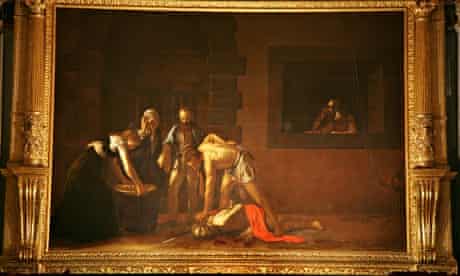
Caravaggio shows a murderous moment in a prison grand. The executioner has drawn a pocketknife to sever the last tendons and skin of John the Baptist's neck. Someone watches this horrific moment from a barred window. All around is sepulchral gloom. Decease and human cruelty are laid bare past this masterpiece, as its scale and shadow daunt and possess the heed.
St John's Co-Cathedral, Valletta, Malta
Rembrandt – Self-Portrait with Two Circles (c 1665-9)

You are not looking at Rembrandt. He is looking at you. The authority of genius and age gaze out of this autumnal masterpiece with a moral scrutiny that is terrifying. Rembrandt seems to see into the beholder'southward soul and perceive every failing. He is like God. He is the most serious artist of all, because he makes everyone who stands before him a supplicant in the court of truth.
Kenwood Firm, London
Chauvet cave paintings (c 30, 000 years ago)
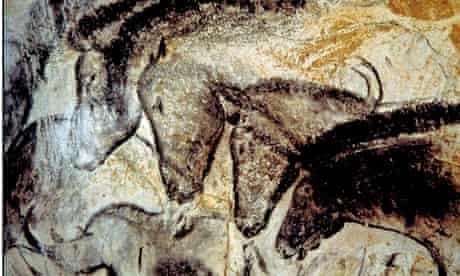
Who painted these exquisitely lifelike portraits of animals? There was no such thing as writing in the ice age so nothing is known of the names, if they had names, of these early people. Cave artists may accept been women; they may accept been children. What is known is that Human being sapiens, our species of man, makes its mark with these paintings that are as beautiful and intelligent as annihilation created since.
Chauvet-Pont-d'Arc Cave, Ardèche, France
Jackson Pollock – One: Number 31, 1950 (1950)
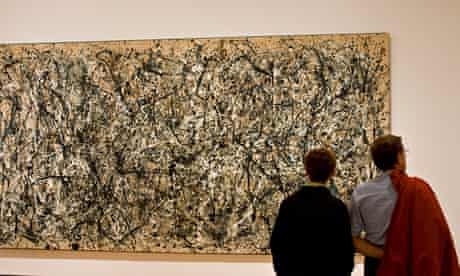
The art of Jackson Pollock is a modern mystery. How, from flinging paint on a canvas laid on the ground, did he create such dazzler and inner structure? Like a solo by Charlie Parker or Jimi Hendrix, his freeform improvisations loop and lurch and notwithstanding achieve a profound unity. Pollock only held this together for a short period of brilliance. This painting is a cathedral of the mind.
MoMA, New York
Velázquez – Las Meninas (c 1656)
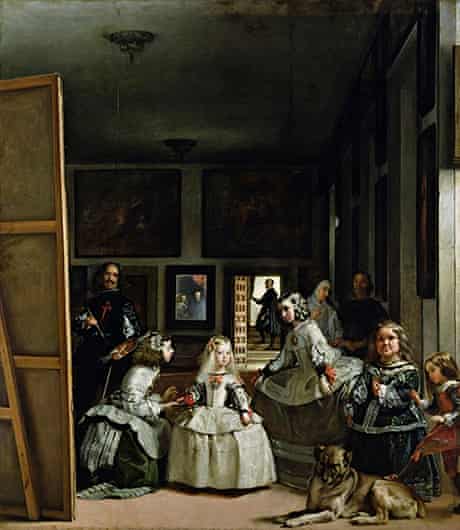
The male monarch and queen stand up where you lot are standing, in front of a gathering of courtiers. Velazquez looks from the portrait he is painting of the purple couple. The infanta and her retinue of maids (meninas) and dwarf entertainers are gathered before the monarch. In the distance, a minister or messenger is at the door. In a bright mirror, the royal reflection glows. This painting is a many-layered model of the world's strangeness.
Prado, Madrid
Picasso – Guernica (1937)

When Picasso started to pigment his protestation at the bombing of Guernica, the ancient Basque capital, by Hitler's air forcefulness on behalf of Franco in the Spanish Civil State of war, he was at the height of his powers. 30 years after painting his subversive modernist grenade of a motion picture Les Demoiselles d'Avignon, his cubist intelligence was at present enriched by the mythology and poetry unleashed past the surrealist movement. He also looked dorsum to such historical paintings as Raphael'south Burn down in the Borgo equally he prepare down the greatest human being statement of the 20th century.
Reina Sofia, Madrid
Michelangelo – Prisoners (c 1519-34)
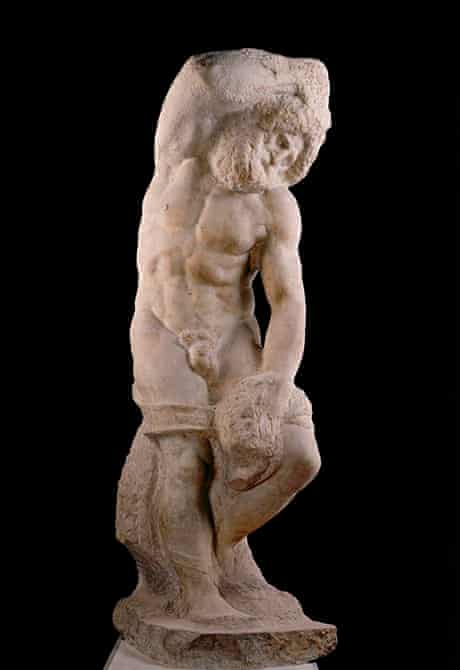
Michelangelo'due south Prisoners, or Slaves, were begun for the tomb of Pope Julius Two merely never finished. In its entirety – including the Dying and Rebellious Slaves in the Louvre and the statue of Moses on the terminal, reduced version of the tomb eventually erected in Rome – this constitutes the greatest unfinished masterpiece in the world. Yet Michelangelo did not exit things unfinished out of laziness. Information technology is an aesthetic choice. The tragic power of these prisoners as they struggle to emerge out of raw stone is an expression of the human status that equals Shakespeare's Hamlet.
Accademia Gallery, Florence
Parthenon Sculptures (447-442 BC)
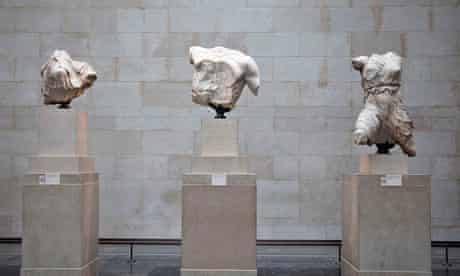
The long marble frieze, colossal broken statues of reclining gods, and frenzied carvings of centaurs fighting humans that Lord Elgin removed from the Athenian Acropolis two centuries ago are all-time known today equally objects of controversy – which is deplorable, because nosotros should be marvelling at their genius. Most of the best ancient Greek sculpture is only known through Roman copies. This is the greatest assembly anywhere of the real affair: the very art that created the thought of the "archetype". Gaze on the lowing heifer that inspired Keats'south Ode on a Grecian Urn and the goddesses whose robes uncannily resemble pictures by Leonardo da Vinci. Artistically, beyond the squabbles, it doesn't get better than this.
British Museum, London
Cézanne – Mont Sainte-Victoire (1902-4)
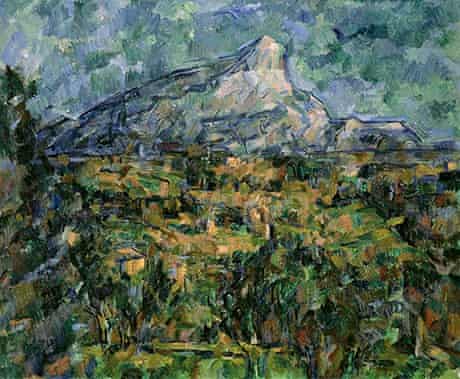
Source: https://www.theguardian.com/artanddesign/jonathanjonesblog/2014/mar/21/the-10-greatest-works-art-ever
Post a Comment for "Identify the Name of the Following Art Work and Which Culture It Came From"